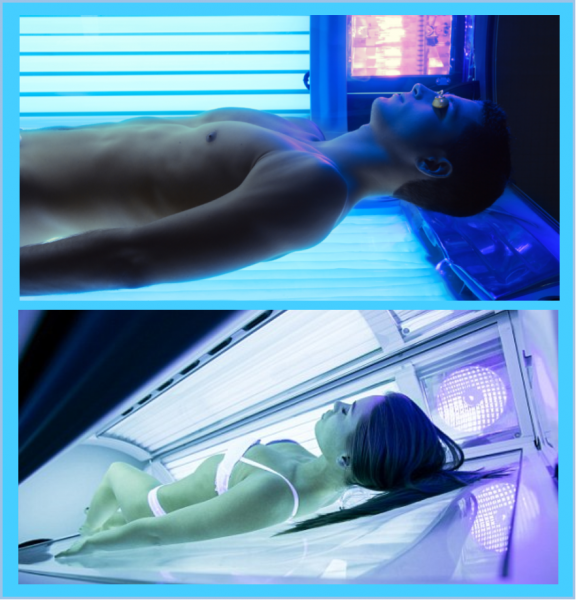Tanning Beds in Gyms Is Concerning Trend, UConn Study Finds
/"By pairing exercise with tanning beds, gyms send the message that tanning is part of a healthy lifestyle. It is not," according to University of Connecticut researcher Sherry Pagoto in a study published this month in the Journal of the American Medical Association Dermatology. Pagoto is a professor of allied health sciences and president of the Society of Behavioral Medicine. “The presence of tanning beds in gyms is a concerning trend.”
Pagoto and her colleagues surveyed more than 600 people who had used a tanning bed at least once in their life. Nearly one-quarter (24%) had tanned in a gym at least once, the findings showed. Those who had tanned at a gym tended to be heavier tanners overall, and were more likely to be what the researchers called "addictive" tanners.
Nearly half the gyms in the U.S. contain tanning beds. Two of the largest American gym chains (Planet Fitness and Anytime Fitness) with total combined membership of more than 13 million people offer indoor tanning, the study pointed out. Anytime Fitness and Planet Fitness each have 26 Connecticut locations.
Exercise and tanning are both activities people use to improve their appearance; and people who tan in gyms tan more often – and more addictively – than other people who use tanning beds, according to the study. Exercise reduces the risk of every cancer except one – melanoma, the deadliest form of skin cancer. People who exercise heavily are at greater risk of skin cancer, and yet many gyms in the U.S. have tanning beds. In other words, tanning beds in gyms are targeting people who are already at higher risk of skin cancer, UConn Today explained recently in highlighting the study.
“Exercise and tanning are both things people use to look better, which may be why we see a connection between these two behaviors, and why gyms are providing tanning beds to patrons,” Pagoto said.
 The study also found that greater tanning was associated with more frequent exercise, which is especially concerning, because of the connection between heavy exercise and skin cancer risk. Researchers don’t know why exercise is associated with an increased risk of skin cancer. But they do know that the majority of skin cancers are caused by exposure to ultraviolet light, which is what tanning beds produce.
The study also found that greater tanning was associated with more frequent exercise, which is especially concerning, because of the connection between heavy exercise and skin cancer risk. Researchers don’t know why exercise is associated with an increased risk of skin cancer. But they do know that the majority of skin cancers are caused by exposure to ultraviolet light, which is what tanning beds produce.
Ongoing, occasional use of tanning beds triples a person’s lifelong risk of melanoma, according to the Melanoma Research Foundation, and the incidence of skin cancer has been rising for 30 years in the U.S. About 91,000 people will be diagnosed with melanoma in 2018, and about 9,000 will die from it, according to the American Cancer Society.
“Indoor tanning is the same class of carcinogen as tobacco, radon, and arsenic,” says Pagoto. “Those are not things you’d want around you while you’re working out.”
 Pagoto is also Director of the UConn Center for mHealth and Social Media. She is also a licensed clinical psychologist her research focuses on leveraging technology in the development and delivery of behavioral interventions targeting diet, physical activity, and cancer prevention behaviors. She has had federal funding for her program of research for 14 consecutive years, totaling over $11 million, and has published over 170 papers in peer-reviewed journals, according to the UConn website.
Pagoto is also Director of the UConn Center for mHealth and Social Media. She is also a licensed clinical psychologist her research focuses on leveraging technology in the development and delivery of behavioral interventions targeting diet, physical activity, and cancer prevention behaviors. She has had federal funding for her program of research for 14 consecutive years, totaling over $11 million, and has published over 170 papers in peer-reviewed journals, according to the UConn website.
Among the statements from survey respondents: “My urges to indoor tan keep getting stronger if I don’t indoor tan,” and “at times, I have used money intended for bills to pay for my tanning sessions.”
Pagoto was joined in the study by researchers from the University of Mississippi Medical Center, Lincoln memorial University in Tennessee, University of Massachusetts Medical School, Pennsylvania State University and East Tennessee State university. The study was funded by the Centers for Disease Control and Prevention, Division of Cancer Prevention and Control.





























